
Waste management authorities are working constantly to ensure the metropolis' garbage is put to better use
BY TIM HORNYAK
The New Sea Surface Disposal Site is the final resting place for trash churned out by Tokyo’s 23 wards. It’s crawling with dump trucks and bulldozers packing Tokyo’s waste into a carefully layered sandwich 30 meters deep. The island is composed of ash from incinerated trash, pulverized nonburnable trash and processed sewage sludge, along with real soil. Exhaust pipes for methane gas seeping from the garbage underfoot stud the mass, while exposed sedimentary layers reveal plastic scraps and other refuse, some decades old. But these are rare: garbage is mostly invisible here, buried under a top layer of soil, and that’s why the sky isn’t full of birds like in Alfred Hitchcock’s avian thriller of 1963. And as the landfill grows, so does the city: This is the newest face of Tokyo.
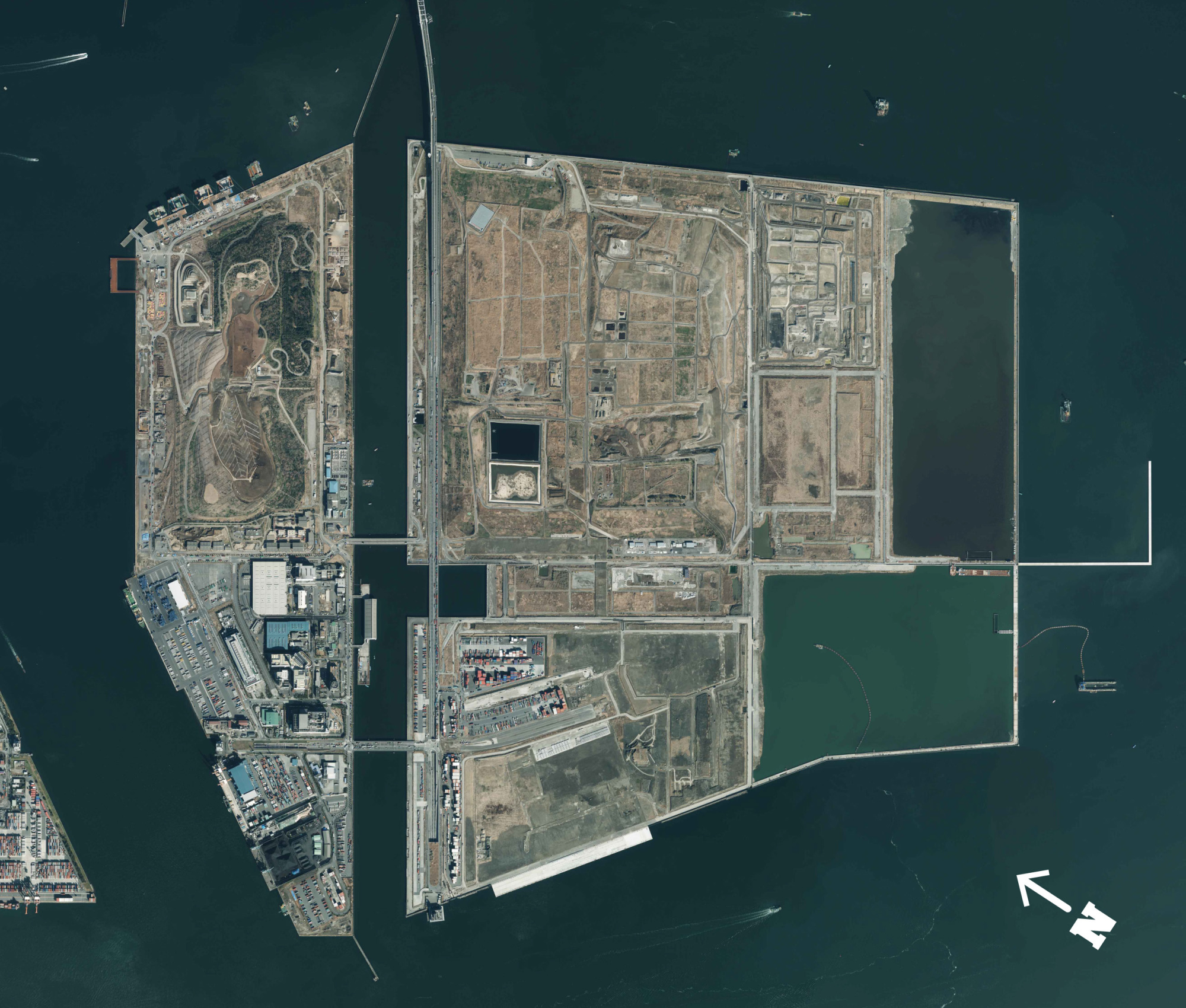
Future oasis
The disposal site and adjacent Central Breakwater landfills will become parks in the future. The area is part of a site roughly 1,000 hectares large sprawling southward from Odaiba, the artificial island facing central Tokyo. When it’s complete, the western half will be made of soil and will support a terminal for shipping containers. The eastern half, built of garbage, will eventually become green space with leisure facilities. One corner of this oasis of trash that’s already nearing completion is Umi no Mori (Groves on the Ocean). It’s a rolling park measuring 150 hectares, about the size of an average golf course. Its hilltop lookout is already covered with grass and fringed by pine trees. It offers sweeping views of the city’s waterfront and Tokyo Gate Bridge. Umi no Mori is slated to open sometime after the 2020 Tokyo Olympics. Future generations of Tokyoites will sun themselves here by the sea while relaxing on garbage.
“Umi no Mori was created to turn something negative — the garbage from people’s everyday lives — into something positive,” says Nami Murakami of the Port of Tokyo’s Marine Parks Department. “It will give birth to an area of trees that are planted and cared for by Tokyoites, making a beautiful forest.”
Yesterday’s trash
In the Edo Period (1603-1868), before the era of mass production, Japanese people recycled much of what they used. However, things began to change with the rapid industrialization that began in the late 19th century. The first modern regulation on garbage management was the Waste Disposal Law of 1900, and Tokyo’s first garbage incinerator was set up in Osaki in 1924. Since 2000, the incinerators in the central capital have been managed by the Clean Authority of Tokyo 23 (CAT23), which was established by Tokyo’s 23 central wards.
Landfill construction of the Central Breakwater began in 1973, not long after Tokyo Gov. Ryokichi Minobe declared a “war on garbage” as the metropolis was choking on waste amid the high economic growth of the postwar era. The campaign is credited with raising Tokyoites’ awareness of the problem and smoothing opposition to new garbage facilities. Filling in the sea with trash, however, is a longstanding tradition. It goes back at least as far as the No. 8 landfill in Shiomi, Koto Ward, in the 1920s, which was followed by nearby Yumenoshima in the 1950s and Wakasu in the 1960s. As these dumps filled up, large-scale landfill work for both garbage disposal and cargo storage began farther out on Tokyo Bay, between the Tama and Arakawa estuaries.
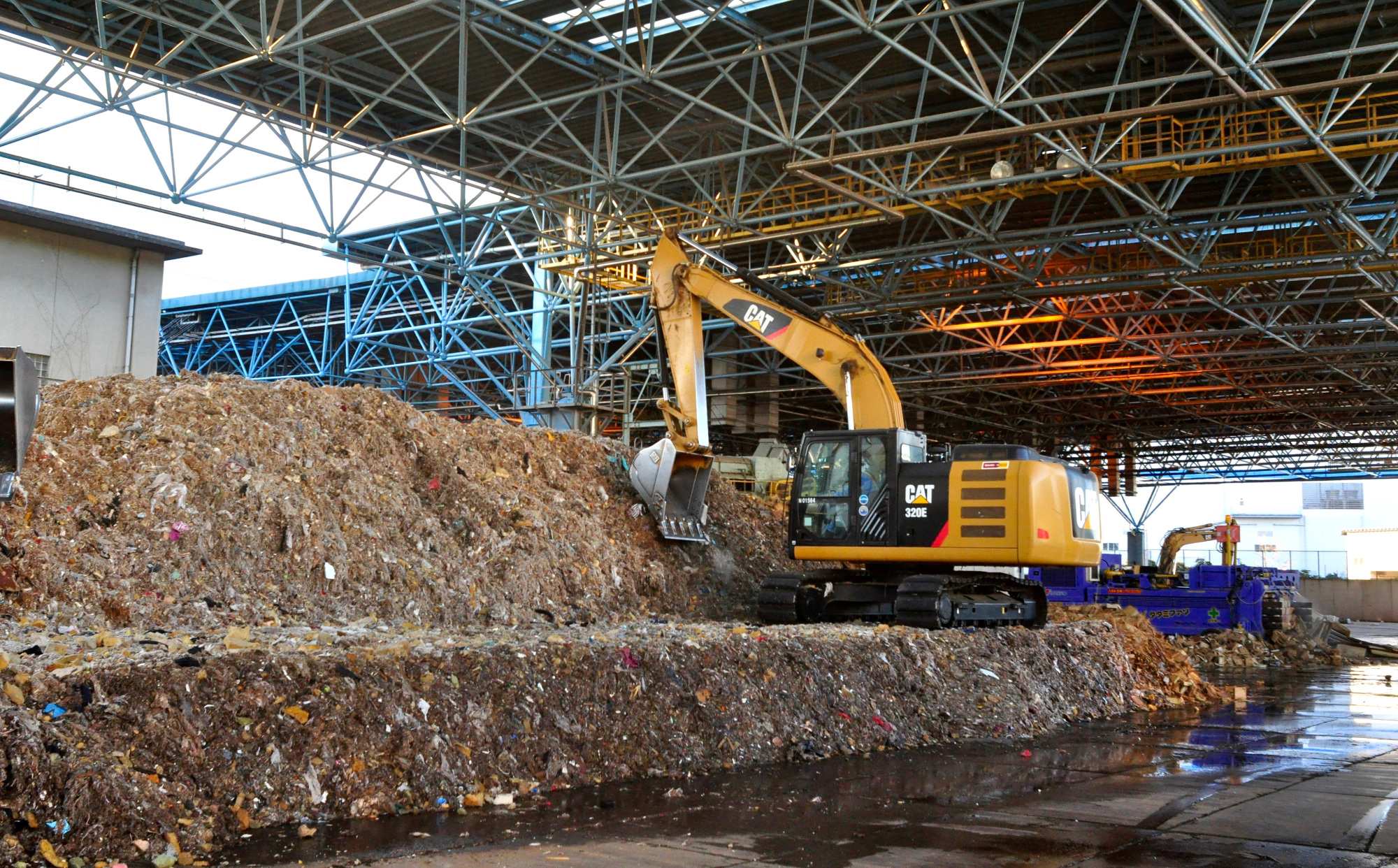
From trash to ash
Turning garbage into land is the end result of an elaborately engineered process that’s all the more remarkable considering the city’s density. Tokyo lies at the heart of the world’s largest metropolitan area: more than 37 million people all told, including the capital’s own 13.5 million. And yet Tokyo manages to stay remarkably clean. If not immaculate, the streets are generally tidy and the air is breathable. That’s due in large part to how the city handles and burns its garbage.
This happens in three stages: collection; intermediate processing, including incineration and pulverization; and landfills. In 2014, Tokyo’s waste totaled 2.7 million tons, down from a record high of 4.9 million in 1989 during the height of the country’s asset-inflated bubble economy. Of that 2014 total, about one-eighth ended up in landfills on Tokyo Bay. The rest went up in smoke.
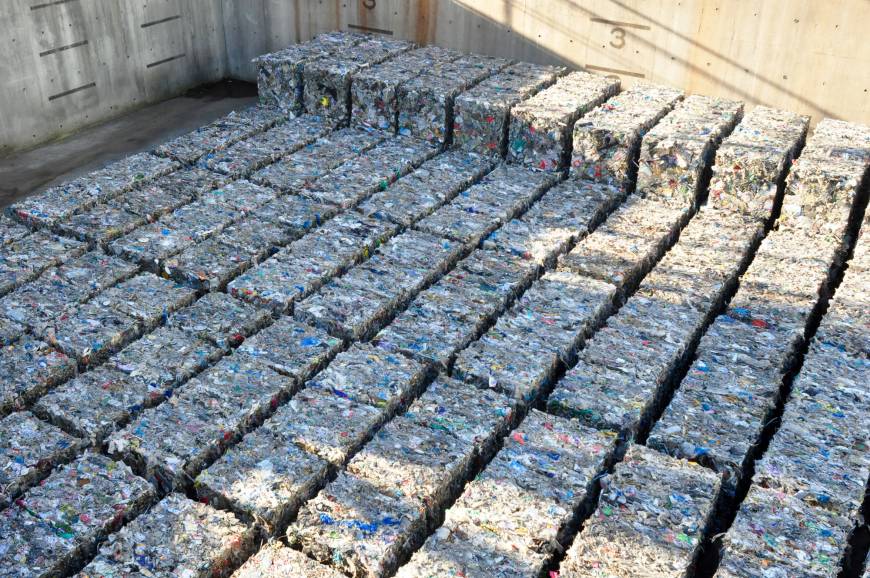
The journey of garbage begins with collection. Walk around any neighborhood and you’ll soon come across detailed roadside signs with colorful icons and weekly schedules. These govern the disposal of waste, and many visitors to Japan have noted how meticulous the rules can be. In Setagaya Ward, which has a population of about 910,800 people and is the largest of Tokyo’s wards, city officials publish a guide to garbage disposal and recycling facilities that’s 24 pages long.
Households and businesses separate their trash into burnable items (everything from kitchen scraps to plastic bags, paper and clothing) and nonburnable items (glass, metal, batteries, crockery and electronics) as well as recyclables. Typically, burnable garbage is collected twice a week, nonburnable twice a month and recyclable materials such as PET bottles, glass, newspapers and cardboard once a week; oversized trash and appliances are handled under a separate system.
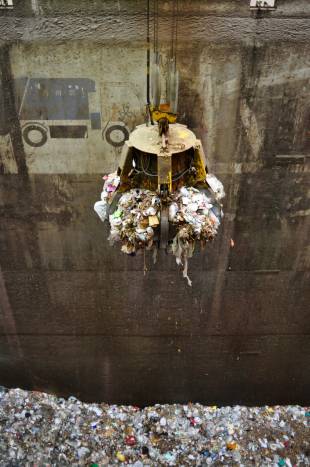
When the garbage trucks are full, they roll to sites such as the Shinagawa Incineration Plant. Opened in March 2006 after extensive refurbishments to what was previously the Oi Incineration Plant, it’s a high-tech bonfire for trash. Equipped with two incinerators, the plant mainly handles burnable trash from Shinagawa Ward, with a daily capacity of 600 tons per day — about average for incinerators in the capital. That’s about the amount of waste produced by 600,000 people per day, but since the population of Shinagawa is only 392,000, it also handles trash from nearby locations such as Meguro Ward.
To track trash inflows, garbage trucks are weighed when they arrive at the plant. They dump their hauls from a large platform into the refuse bunker, a chasm-like structure, about 70 meters wide, that can hold up to four days’ worth of trash. Imagine the “Star Wars” Death Star trash compactor on steroids and you’ll get the idea. The stench in the bunker is overwhelming, so a forced draft fan keeps the internal air pressure lower than that outside to prevent it from escaping. Inside the bunker, two large cranes hang from gantries overhead like claws in a giant UFO catcher game. Operated either manually or automatically, the claws stir the accumulated trash to promote even burning. At regular intervals, they grab car-sized clumps and transfer them to a waste hopper leading into the furnaces. The entire operation is monitored around the clock from a central control room with live video feeds of the furnaces, bunker and other parts of the plant.
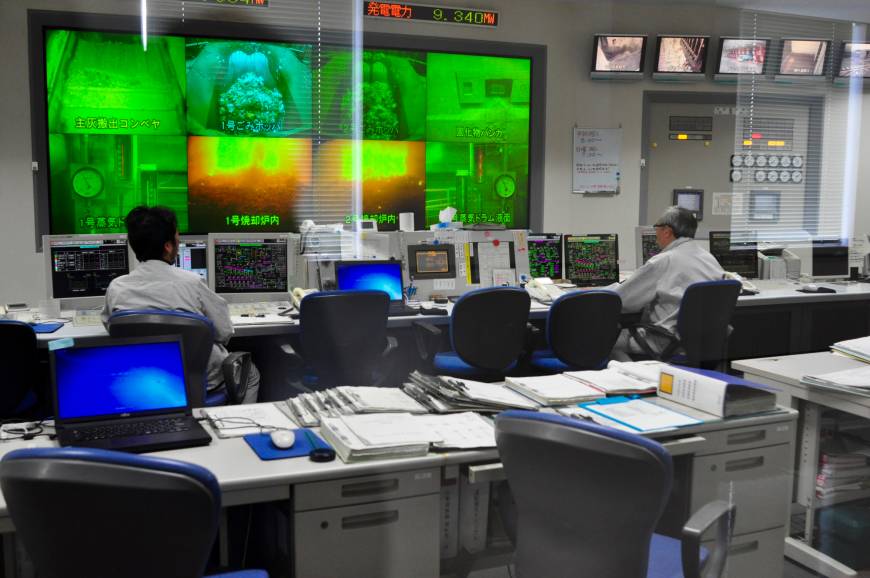
High-temperature burn
The furnaces are where all the plastic, food scraps, diapers, paper and all the other detritus of our lives goes up in flames. The incinerators have fire grates in the shape of staircases; if large metal objects such as box springs get in here, they can gum up the works and force a shutdown.
All this burning, however, produces byproducts. One is huge volumes of exhaust gas. This has to go through an extensive treatment process to reduce the environmental impact of toxins such as mercury and dioxins. By burning the waste at a high temperature of more than 850 degrees Celsius, the formation of dioxins can be kept in check, according to the plant and environmental experts.
“The Stockholm Convention on Persistent Organic Pollutants requires the use of best available techniques to reduce the emission of dioxins,” says Eisaku Toda, a researcher with the U.N. Environment Program’s Chemicals and Waste Branch. “One of the elements of the best available technology is combustion at high temperature, which is described as 850 to 950 (degrees Celsius) for at least two seconds for municipal waste incinerators. The safety of exhaust gas from incinerators is regulated by national laws in many countries, including Japan.”
As the gas moves through pipes leading away from the incinerator, it is quickly cooled to 150 degrees Celsius to prevent dioxin resynthesis. The bag filter and gas scrubber stages of the treatment process then remove soot, dust, hydrogen chloride and sulfur oxide from the exhaust, which is then released into the air via a smokestack, free of hazardous materials, according to the plant.
“One of the distinguishing features of this plant is that more than half of the plant building is devoted to pollution-control facilities,” says plant manager Hidenori Yokoyama. “We have to protect the environment for people living nearby.”
“The mercury in exhaust gas is constantly monitored in the central control room of the incineration plant and, if it exceeds our limit, which is higher than that set by law, we must stop the incinerator,” says Nobuyoshi Shiratori, an international cooperation official with CAT23, which runs incinerator plants in the capital and posts environmental impact test results on its website. “It’s also important to minimize the possibility of generating dioxins by treating the exhaust gas.”
The Ministry of the Environment says that dioxin exposure at levels seen in everyday life in Japan does not have any effect on health. According to Tokyo’s Bureau of Environment, dioxins emitted into the atmosphere in fiscal 2015 had dropped to about one-50th of levels in fiscal 1998. Shiratori attributes the reduction to newer incinerators that could burn trash at higher temperatures and the addition of filtering fabrics in the gas treatment process.
“Due to the 1997 amendment of the Waste Management and Public Cleansing Act, many waste disposal facilities in Japan had to go undergo renovation and reconstruction work,” Shiratori says.
Another byproduct of incineration is ash. Bottom ash is generated in the incinerator and then part of it is recycled in a bid to reduce the volume that ends up in landfills. The Shinagawa plant produces some 180 tons of bottom ash every day. In 2015, some 5,000 tons of bottom ash was used as a substitute for clay in the production of cement.
Bottom ash can also be melted at temperatures over 1,200 degrees Celsius, then cooled, to create slag, which can be used to make asphalt and other construction materials. Although this method has been curtailed in a bid to save energy following the Great East Japan Earthquake of 2011, if you find yourself walking on a sidewalk paved with blocks in Tokyo, it might be based on trash.
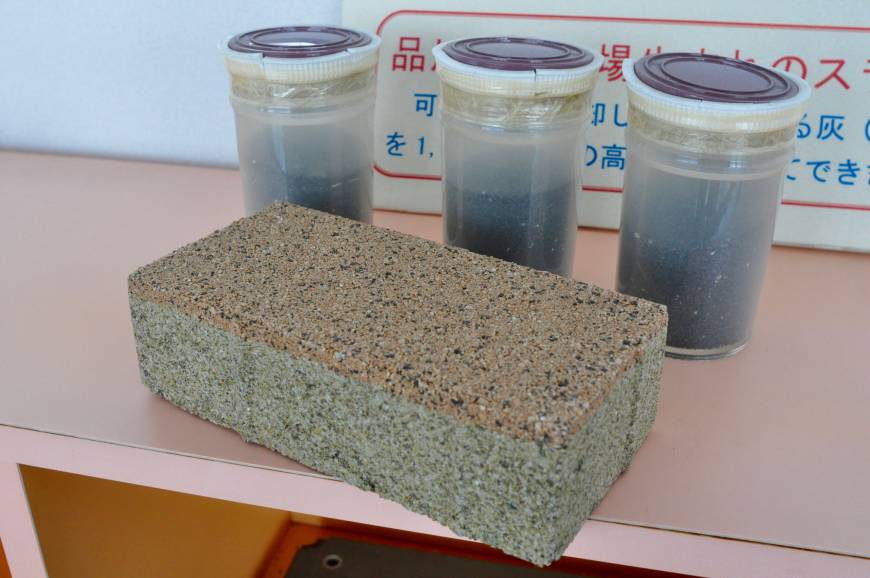
In addition, there’s fly ash, which is made up of soot and dust collected in the bag filter; after chemical processing, it’s sent to landfills.
Another byproduct of the burning is heat energy. Some is captured to generate electricity and power parts of the facility. Excess power is both sold to Tokyo Electric Power Co. Holdings or provided as hot water to a nearby public housing facility for heating and air conditioning.
In fiscal 2015, 19 plants under CAT23 sold enough electricity to power the equivalent of 200,000 households. In 2016, the Shinagawa plant sold some ¥580 million worth of electricity.
Incombustibles
Tokyo’s incombustible trash is processed at two centers on the bay. The lion’s share goes to the Chubo Incombustible Waste Processing Center, built on landfill beside Umi no Mori. It handles about 60,000 tons of trash annually.
Wheel loaders push incombustibles into conveyor belts leading to hulking rotary crusher machines, in which 128-kilogram metal hammers pulverize the waste into bits, which are then separated with magnets into iron, aluminum and other material. The iron and aluminum is compacted into blocks and sold by Chubo, with annual revenue totaling about ¥220 million and ¥98 million, respectively. Still, about 85 percent of incombustible waste ends up in landfills after processing.
The fate of oversized garbage such as furniture is the opposite. Chubo takes in some 70,000 tons per year, including everything from pianos to desks and tatami mats. About 72 percent of it is burned. It’s pulverized, stripped of its iron, and the remnant shipped to incinerators. Enormous specialized chopping machines such as a tatami mat shredder grind away all day long.
In fiscal 2014, the most numerous pieces of oversized garbage were: 905,000 futons, 643,000 pieces of furniture and 528,000 chairs.
Looking to the future
While Umi no Mori undergoes civil engineering work and landscaping, it won’t open in time for the 2020 Tokyo Olympics even though the adjacent breakwater canal will be used for canoeing and other watersports.
However, a problem overshadows these islands of trash emerging from Tokyo Bay — what to do when they’re full. That should happen in about 50 years, according to Tokyo government officials. There’s no more room to expand the landfill area farther south into the bay because that will interfere with shipping lanes. The only solution is to make the best use of what’s available.
“People have been talking about this for the past couple of decades,” Shiratori says. “Residents of the 23 wards of Tokyo have carried out the practice of 3R — reduce, reuse and recycle — in an effort to reduce the waste going to the landfill.”
As part of these measures to minimize landfill use, Tokyo is also weighing whether or not to increase the amount of waste that becomes material for cement production, recovering metals from incinerator ash and burning residue left over from treating incombustible waste.
“We have to cut down on waste itself and recycle things that could become waste,” Shiratori says.



